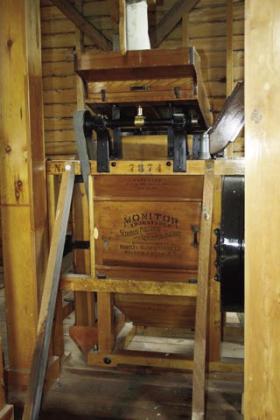An early settler of Pueblo County, Eugene farmed at the St. Charles River before helping to develop Pueblo and Canon City. Quotes and most of the information that follows are from his biography recorded in the 1899 “Portraits and Biographical Records of the State of Colorado” published by the Chapman Publishing Company.
Eugene was born in Bloomfield (now Skowhegan), Maine on September 24, 1835. His ancestors settled in Salem Massachusetts in 1644; his grandfather was one of the first settlers of Maine in 1774. His parents, Ebenezer and Della Bliss Weston moved their family of seven surviving children to West Springfield Massachusetts in 1847 to his mother’s parents’ farm while his father worked as a merchant.
Three years later, they purchased a farm near Henry, Illinois. Following in the footsteps of his father, Eugene taught school here during the winter of 1857-58.
Although his father was a good mathematician, excelled in Greek, Latin, and French and was interested in the sciences particularly astronomy and botany; Eugene did not share these interests and grew restless, seeking adventure.
In June 1858, he left home settling briefly in St. Louis before heading west to Kansas, near Atchison, where he worked as a store clerk.
In the spring of 1859, Eugene joined a group headed towards Pike’s Peak. They met a large party of wagons returning from the Rockies, the members discouraging enough to cause Eugene’s group to turn back. Back at the Missouri River, Eugene was hired by a trading outfit bound to New Mexico. He returned to Missouri to teach school for the winter term of 1859-60. It took some time for the word of his mother’s death in 1859 to reach him.
Eugene drove an ox-team to California Gulch (Leadville, Colorado) in the spring of 1860. He worked in the mines and prospected until the cold began to set in.
With many other miners, he spent the winter in the newly formed town of Canon City.
By the spring of 1861, Eugene decided to give up prospecting. He joined a few settlers on the St. Charles River in Pueblo County.
As the small group began clearing ground near the river preparing to plant, a small band of Cheyenne and Arapaho passed by in pursuit of braves from a Ute camp up the creek. The band killed and scalped one Ute, who was herding the ponies, but were driven off with the loss of a few of their own braves.
“One of the settlers, who had lived among the Sioux, said they would return, which they did, 600 strong composed of Comanche, Kiowa, Apache, Cheyenne, and Arapaho. They were very hostile and much excited because the settlers were burning brush heaps, which the plains Indians interpreted as a warning to the Ute.
Utterly helpless, all the settlers could do was to lock their houses to prevent plunder, and meet them unarmed, but fearlessly. The settlers survived the skirmish.”
The settlers managed to harvest and sell their bounty for a profit, but Eugene moved closer to the relative security of the town of Pueblo that winter. He cleared ground and planted just to the north of the town in the spring of 1862. Over the winter he had made plans to construct a three-story flour mill. With the assistance of an Illinois company, the machinery was shipped to Pueblo. Timbers were hauled from Mace’s Hole (Beulah) and the sawed lumber brought by cart from a saw mill on the Palmer Lake divide. The flour mill was constructed just south of what is now the Pueblo State Hospital grounds. Fledgling Pueblo was pleased to have “such a vital industry to serve the whole region”. Eugene was granted an eighth individual interest in the town site of Pueblo for his efforts.
Unfortunately, shortly after the machinery was installed, the entire structure burned to the ground and was a complete loss.
Meanwhile, Eugene’s younger brother, Samuel Henry Weston died of wounds during the Battle of Fort Donelson in Dover, Tennessee in February 1862.
He was serving with Company B of the 17th Illinois Infantry.
(to be continued)


